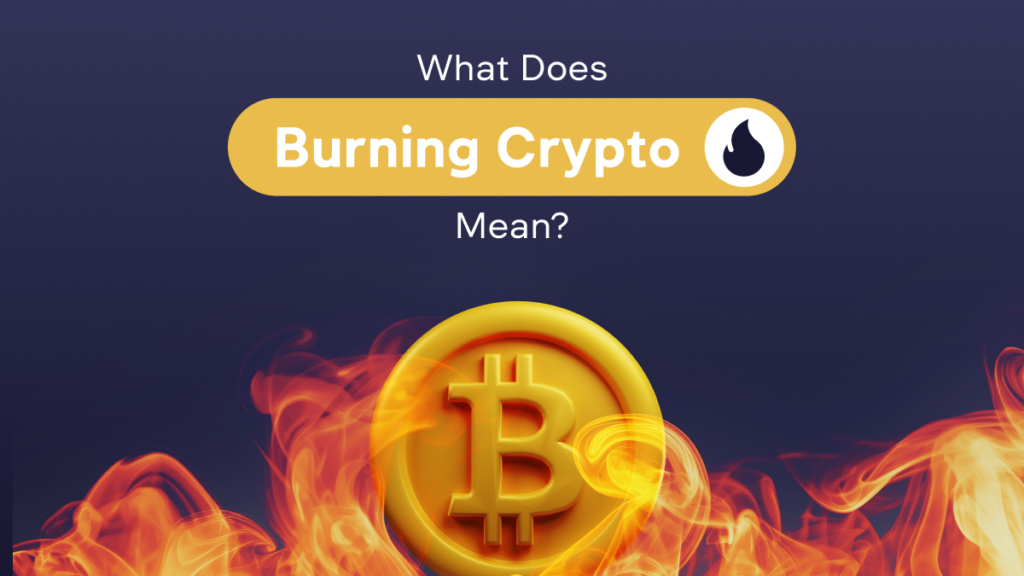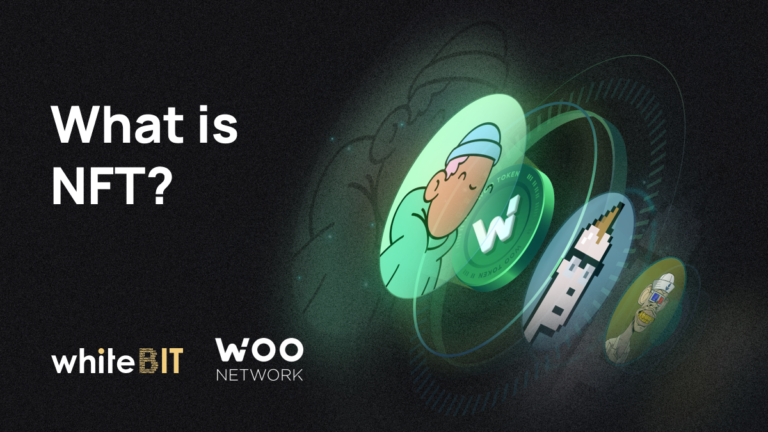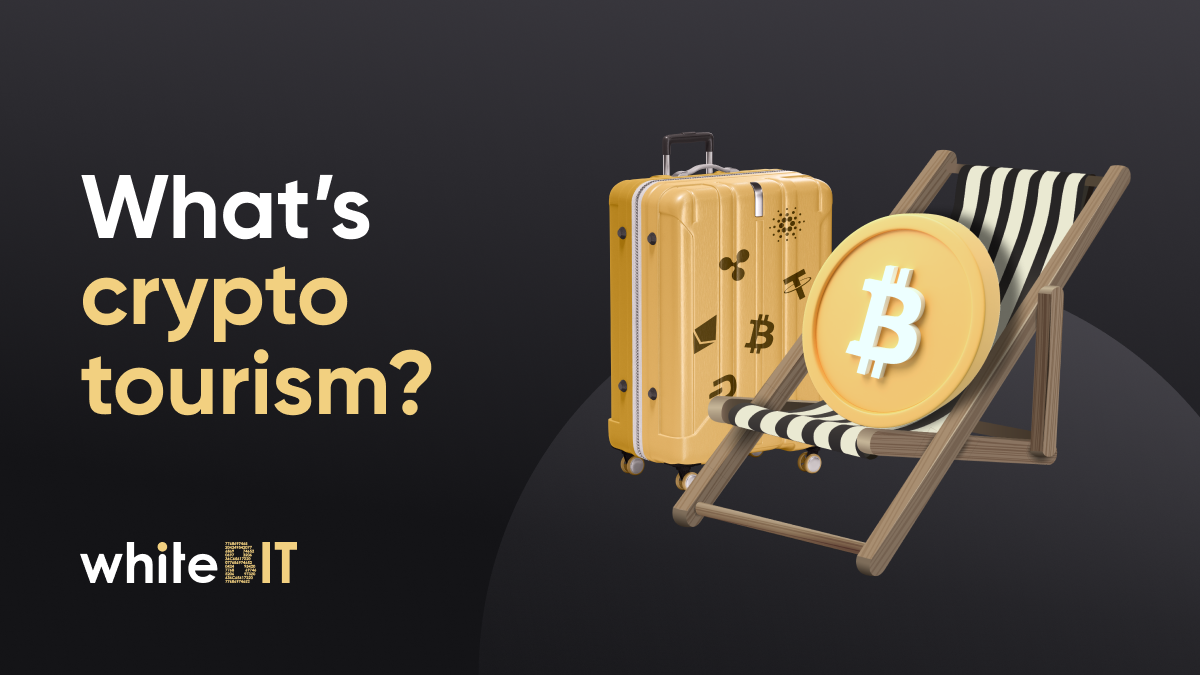What Does Burning Crypto Mean?

Content
One of the key tools for regulating the amount of cryptocurrency in circulation has been the process of burning. This means that assets are permanently removed from circulation. However, why do traders and crypto projects voluntarily destroy their assets? In this article, we will look at various aspects of cryptocurrency burning, its role in managing the crypto asset economy, and increasing the value and stability of assets.
What Does it Mean to Burn Crypto?
Cryptocurrency burning is the process of irreversibly destroying a certain number of tokens or coins according to a set algorithm, randomly or by decision of the owner or community. Tokens are burned using special addresses or smart contracts that are inaccessible to anyone. The goals of this process are different: to create demand, stabilize the exchange crypto rate, or protect the network from spam transactions.
Reasons for Burning Crypto
- To Increase a Coin’s Value. When someone burns crypto, it is permanently removed from circulation, which can result in shortages of that particular asset. A reduced supply, paired with stable or increasing demand, could lead to a rise in token prices. Thus, token burning is often considered a deflationary measure that, according to basic economic principles, can positively impact the coin’s price over time.
- To Keep Stablecoins Stable. The peg of stablecoins to the price of national currencies is maintained by the fact that each stablecoin is backed by an equivalent denomination in the issuing company’s bank account. When users exchange their stablecoins for national currencies, the project burns them to maintain the “one dollar = one token” peg.
Token burning is also used to correct errors. For example, when Tether, the issuer of USDT, accidentally “printed” 5 billion tokens, it immediately burned them.
- As a Marketing Strategy. Projects can schedule token burning events or announcements for specific dates to create anticipation in the community. Using social media, influencers, and official channels, they fuel interest with mysterious messages and hints. As a consequence, this increases interest in the token and can attract new audiences.
- To protect against spam. Proof of Burn (PoB) is a consensus algorithm in which participants burn a certain amount of cryptocurrency to mine or confirm blocks. The more coins burned, the easier it is for the participant to mine blocks. In some blockchains, fees are burned, requiring users to spend a certain amount of cryptocurrency to perform transactions. This mechanism prevents network overload due to a multitude of spam transactions and maintains the overall efficiency and functionality of the blockchain.
How Does Burning Crypto Work?
As a part of the burning process, developers or the community behind a project transfer the cryptocurrency to an address that’s inaccessible to anyone. This practice is employed to regulate the asset’s economy, as part of a marketing strategy, or to uphold the asset’s value. To fully explain the concept of cryptocurrency burning, it’s important to highlight both intentional and unintentional token burning.
Thus, the ways of burning include losing the private key for the address with crypto assets stored on it. Analyst Timothy Peterson from Cane Island Alternative Advisors says that 6 million BTC are considered burned.
What methods do people resort to try to regain access to lost funds: Rain Lõhmus, co-founder of Estonia’s LHV Bank, said he plans to “remember” the password to a wallet with 250,000 ETH (more than $521 million at the time of writing) using artificial intelligence. “My plan is to create Rain Lõhmus as an AI and see if he can get his memories back.”
If we’re talking about intentional burning, it works thanks to the Proof-of-Burn consensus algorithm, smart contracts, and regular burning programs.
Different Methods of Burning Crypto
Proof of Burn (PoB)
Proof-of-Burn (PoB) is a consensus algorithm in blockchain technology in which participants intentionally destroy a certain number of coins by sending them to the “eater address” or a “burn address.” The result of such a transaction will be a special hash that is used to form Proof-of-Burn (PoB) blocks. These blocks are interleaved with Proof-of-Work (PoW) blocks. The destroyed coins will eventually undergo the Decay process.
The possibility of generating a PoW block depends on the computing power that was used. Similarly, the probability of finding a PoB block depends on the number of coins that have been consumed (burned). Simply put, the more coins burned, the higher the probability that the user will mine the next blocks.
Usage-Based Burning
Usage-based burning is a concept in the cryptocurrency industry whereby tokens are intentionally destroyed or “burned” depending on their usage in the blockchain ecosystem.
There are two common implementations: fixed fee burning and percentage burning of the entire transaction. The first type of burning was introduced in Ethereum after the implementation of EIP-1559, where the base transaction fee is burned, and miners receive rewards as “tips” for priority. A similar approach is applied in the Polygon blockchain. The second type involves burning a percentage of the entire transaction, often used for marketing purposes. In this approach, users pay an additional fee, calculated as a percentage of the transaction amount, with these funds being immediately burned.
Buyback and Burn Programs
Buyback and burn programs are strategic initiatives taken by projects to increase the value and scarcity of their tokens. Some cryptocurrency projects conduct regular burn programs, where they buy tokens from users on the open market and take them out of circulation.
Pros and Cons of Burning Crypto
Among the advantages, one can highlight the emission control feature and the overall management of the asset’s economy. This process can indeed help reduce inflation and impact supply and demand, as seen in the case of buyback and burn. Additionally, burning can provide certain benefits to users, as seen in the Proof-of-Burn algorithm or marketing activities.
The downside is that it is not a universal solution for all cryptocurrency projects and may have different effects depending on specific circumstances and strategies. Also, if a user accidentally burns their assets, there is no way to recover them.
How to Participate in Crypto Burning
Steps for Token Holders to Engage in Burning
Crypto projects often provide exclusive privileges or unlock premium services through a process known as “burning crypto coins.” By burning tokens, users can gain entry to one-of-a-kind NFT collections, secure platform subscriptions, or enjoy a range of other advantageous perks. Furthermore, participants in these ecosystems may benefit from reduced blockchain transaction fees, making their crypto experience even more cost-effective. Additionally, developers can create staking mechanisms where token burning will provide users with greater income or other benefits.
Risks and Considerations for Users
To participate in a cryptocurrency burn, users typically follow the instructions provided by the project or platform hosting the burn event. This involves sending a certain amount of their tokens to a specified burn address or interacting with a smart contact.
However, participants should be aware of certain risks. Firstly, the irreversibility of the process means that tokens cannot be recovered once burned. Additionally, the success of token burn initiatives in terms of influencing their value or network dynamics can vary, so users should critically assess the justification and transparency of the project. Another issue is regulatory oversight, as the legality of burning activities may differ in various jurisdictions. In addition, participants should be wary of possible market manipulation or misleading information related to incineration activities. Before embarking on a cryptocurrency burn, it is important to thoroughly understand the intentions of the project, assess the associated risks, and consider the long-term implications.
Famous Crypto Burning Events
WhiteBIT Coin (WBT): In August 2022 at 09:32 (UTC), WhiteBIT crypto exchange conducted the first burn of 973,841 WBT tokens (approximately $4,448,323). Since then, there has been a weekly WBT burn, which is equivalent to the sum of 33% of trading commissions and 5% of other exchange revenue (AML checks, withdrawal fees, margin trading revenue). WBT will be burned until half of the initial issuance remains — that is, 200,000,000 WBT.
Ethereum (ETH): in August 2021, the London hardfork took effect on the Ethereum network. As part of this update, Ethereum introduced the Ethereum Improvement Proposal (EIP) 1559, which significantly changed the transaction fee mechanism. This update introduced the burning of the “base fee,” where a portion of the transaction fee is permanently removed from circulation. Miners receive rewards for block validation and “tips” for transaction priority. The purpose of this coin burn mechanism is to address issues related to the volatility of transaction fees and create deflationary pressure on the overall Ethereum supply.
Stellar (XLM): in 2019, Stellar burned 55 billion XLM tokens. Initially, the price rose by 25%, but the increase was short-lived.
In addition, the organization decided to conduct a burn of 50 billion tokens out of a total stock of 68 billion, intended for the Partner Giveaway and Stellar World Giveaway programs. This brings the total number of XLM coins to 50 billion, and Stellar no longer plans to conduct token burns in the future.
Shiba Inu (SHIB): The burning mechanism in the Shiba Inu network is relatively simple and works in a similar method to Ethereum. Every time a transaction is made on the Shiba Inu network, a small percentage of the transaction fee is sent to a burn address.
One of the most famous burns was done by the co-founder of Ethereum, Vitalik Buterin. He properly showed how to burn crypto when SHIB developers sent 505 trillion SHIB to his wallet without his consent. In May 2021, Vitalik burned 90% of SHIB tokens worth $6.7 billion. He donated the remaining 10% to the India COVID-Crypto Relief Fund. It is believed that following this event, the value of SHIB increased by 35% within two hours.
Also, the project has a burn portal, ShibBurn, which rewards users with a unique token in exchange for burning their SHIB coins. In the first five days after launch, holders burned 20 billion Shiba Inu tokens.
Closing Thoughts
Token burning is a practice that projects use to manage the asset’s economics. The burn methods range from Proof-of-Burn consensus algorithms to smart contracts. However, the common goal is to create scarcity and align economic incentives. Examples, such as the activation of the London hard fork on the Ethereum network and the burning of WBT and SHIB, demonstrate the real impact of these practices.
FAQ
Cryptocurrency burning involves permanently removing a specific amount of assets from circulation. This is done by transferring tokens to a designated zero wallet or locking the assets into a smart contract with no possibility of unlocking them.
The process of burning cryptocurrency is designed to regulate issuance and protect the blockchain from spam transactions.
On the one hand, this is a positive process to protect the network, maintain the stablecoin rate, curb inflation, and create scarcity. On the other hand, there are no guarantees that the asset's price will increase after burning, and burned assets are irreversibly lost.
This is a metric that shows the rate at which tokens are being taken out of circulation.
An increase in the price of an asset due to burning is not guaranteed. Burning as a tool to manage the economics of the asset certainly affects the price, but the very fact that cryptocurrency is being taken out of circulation rather does not affect the price in the short to medium term.










